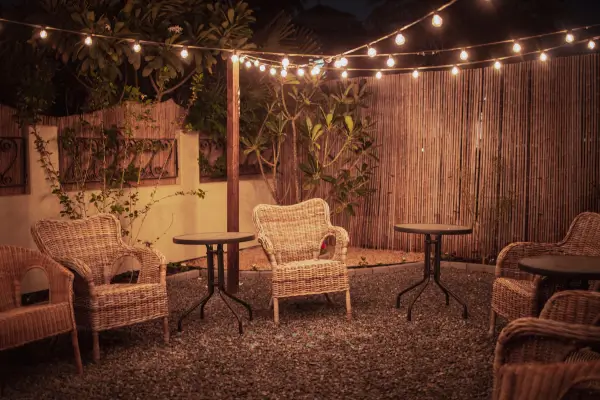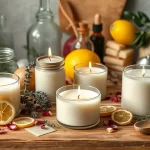Natural fabric dyeing is a creative and eco-conscious way to bring life to your textiles using organic, plant-based materials.
Unlike synthetic options, natural dyes are gentle on the environment and safe for your skin and home.
They offer a rich palette of earthy, vibrant, and soft pastel tones that evolve beautifully over time.
This method is ideal for upcycling clothes, crafting home items, or exploring sustainable fashion techniques.
In this guide, you’ll learn everything you need to start dyeing fabrics naturally — from materials to methods.
Why Choose Natural Dyeing?
Using organic dyes for fabric coloring has multiple benefits, including:
- Eco-Friendly – Reduces reliance on chemical-based dyes that contribute to water pollution.
- Unique Results – No two dye batches are exactly the same, giving each fabric a one-of-a-kind look.
- Health-Safe – Eliminates exposure to harmful substances found in synthetic dyes.
- Sustainable & Cost-Effective – Many natural dye sources are readily available in your kitchen or garden.
- Cultural and Historical Significance – Many civilizations have used natural dyes for centuries, from ancient Egyptians using madder root to Native American techniques with walnut husks.
Now, let’s dive into the process of naturally dyeing fabric and discover the beautiful colors you can create!
Materials and Tools Needed
Before starting, gather the following materials:
Natural Dye Sources:
- Yellow & Orange – Onion skins, turmeric, carrot tops, marigold flowers
- Red & Pink – Avocado pits, beets, hibiscus flowers, pomegranate rinds
- Blue & Purple – Blueberries, black beans, red cabbage
- Green – Spinach leaves, parsley, nettle, chlorophyll extract
- Brown & Earthy Tones – Coffee, black tea, walnut shells, acorns
- Gray & Black – Iron-infused vinegar solution, logwood extract
Additional Supplies:
- 100% natural fabric (cotton, linen, wool, or silk)
- Large stainless steel or enamel pot
- Strainer or cheesecloth
- Wooden spoon or tongs
- Mordants (vinegar, salt, alum, soy milk) to help set the dye
- Rubber gloves (optional, to prevent stained hands)
- Drying rack or clothesline
- pH modifiers (baking soda, lemon juice) for color variations
- Measuring cups and spoons
Preparing the Fabric for Dyeing
Proper fabric preparation is crucial for achieving long-lasting and vibrant colors. Follow these steps before dyeing:
- Wash the Fabric – Use a mild detergent to remove any dirt, oils, or fabric coatings. This step ensures the dye penetrates evenly.
- Mordant the Fabric – Mordants help fix the natural dye to the fabric and improve color fastness. Different mordants produce varied results:
- Salt (for berries and flowers) – 1 cup salt to 4 cups water, simmer for 1 hour.
- Vinegar (for vegetables) – 1 part vinegar to 4 parts water, simmer for 1 hour.
- Alum (for plant-based dyes) – Dissolve 1 tablespoon alum in warm water and soak fabric overnight.
- Soy Milk Soak – A natural binder for protein-based fibers, giving vibrant color results.
- Rinse & Dry Lightly – Wring out excess liquid before placing in the dye bath.
How to Extract Natural Dye
To create a rich dye bath, follow these steps:
- Chop or Crush Dye Material – Smaller pieces release more color.
- Simmer in Water – Use a ratio of 2 parts water to 1 part dye material. Let it simmer for one to two hours, stirring occasionally.
- Strain the Dye – Remove plant solids using a fine strainer or cheesecloth. The longer you let the material steep, the more intense the color.
The liquid left behind is your concentrated natural dye, ready for fabric immersion.
Dyeing the Fabric: Step-by-Step
- Place Fabric in the Dye Bath – Submerge the pre-treated fabric completely.
- Simmer for 1 to 2 Hours – Stir occasionally for even color absorption. Leave it longer for deeper hues.
- Let Fabric Sit Overnight – Allowing the fabric to sit in the dye bath overnight enhances saturation and color longevity.
- Rinse & Dry – Remove excess dye under cool running water. Hang to dry in a shaded area to preserve color vibrancy.
- Iron the Fabric – Heat setting can help lock in the natural dye and prevent fading over time.
Enhancing & Modifying Colors
For a more diverse palette, try these modifications:
- Shift Colors with pH Adjusters:
- Add baking soda for brighter tones.
- Add vinegar for muted shades.
- Iron After-Dip – Creates rich earthy tones or darkens colors like avocado pinks turning into deep mauves.
- Layer Colors: Dye in stages, using different plants for an ombré or blended effect.
- Tie-Dye & Patterns: Use rubber bands, folding techniques, or resist dyeing methods like shibori to create unique designs.
Creative DIY Projects with Naturally Dyed Fabrics
Once your fabric is dyed, put it to good use with these DIY ideas:
- Handmade Scarves & Bandanas – Create wearable art with soft, nature-inspired hues.
- Pillow Covers & Table Runners – Add a sustainable touch to home décor.
- Reusable Fabric Gift Wraps (Furoshiki) – Eco-friendly and elegant gift presentation.
- Clothing Revamps – Refresh old T-shirts, dresses, or tote bags.
- Wall Hangings & Tapestries – Frame naturally dyed fabrics for a unique art piece.
- Table Napkins & Placemats – Bring sustainability to your dining setup.
Using natural dyeing techniques is not just an artistic expression but also a step toward sustainability.
Whether you’re experimenting for fun or looking to embrace a greener lifestyle, this method allows you to create textiles that are both beautiful and environmentally friendly.
Try different plants, experiment with techniques, and discover the magic of organic fabric dyeing!



